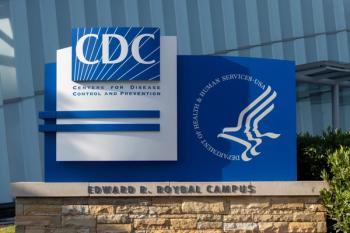
FDA: Monitor Risks of Mixing Opioid Addiction Drugs and Depressants
Patients taking buprenorphine and methadone with benzodiazepines or other central nervous system depressants should be closely monitored.
FDA officials have issued a drug safety communication advising that buprenorphine and methadone should not be withheld from patients taking benzodiazepines or other central nervous system (CNS) depressants. Instead, health care professionals should take precautions and develop a treatment plan when these medications are used in combination.
In August 2016, the FDA issued an announcement warning about the serious risks and death associated with combining opioid pain or cough medicines with benzodiazepines. Since then, the agency has continued to evaluate the evidence regarding the combined use of benzodiazepines or other CNS depressants and MAT drugs.
According to the safety announcement, though the combined use of these drugs may increase the risk of serious adverse effects, the benefits of treating opioid addiction can outweigh these risks. The announcement also said that, “excluding patients from medication-assisted treatment (MAT) or discharging patients from treatment because of use of benzodiazepines or CNS depressants is not likely to stop them from using these drugs together.”
Based on its review of drug use data, the FDA is requiring this information to be added to buprenorphine and methadone drug labels, along with detailed recommendations for minimizing the combined use of MAT drugs and benzodiazepines.
The FDA provides several recommendations to health care providers treating patients who are taking these medications. These include:
- Educating patients about the serious risks of combined use, including overdose and death, that can occur with CNS depressants even when used as prescribed, as well as when used illicitly;
- Developing strategies to manage the use of prescribed or illicit benzodiazepines or other CNS depressants when starting MAT;
- Tapering the benzodiazepine or CNS depressant to discontinuation if possible;
- Verifying the diagnosis if a patient is receiving prescribed benzodiazepines or other CNS depressants for anxiety or insomnia and considering other treatment options for these conditions;
- Recognizing that patients may require MAT medications indefinitely and that their use should continue for as long as patients are benefiting and their use contributes to the intended treatment goals;
- Coordinating care to ensure that other prescribers are aware of the patient’s buprenorphine or methadone treatment; and
- Monitoring for illicit drug use, including urine or blood screening.
The FDA urges patients and health care professionals to report adverse effects involving buprenorphine, methadone, or other medications to its MedWatch program.
Reference
FDA urges caution about withholding opioid addiction medications from patients taking benzodiazepines or CNS depressants: careful medication management can reduce risks [FDA Drug Safety Communication]. [news release]. https://www.fda.gov/Drugs/DrugSafety/ucm575307.htm. Updated September 20, 2017. Accessed September 21, 2017.
Newsletter
Stay informed on drug updates, treatment guidelines, and pharmacy practice trends—subscribe to Pharmacy Times for weekly clinical insights.






















































































































































































































